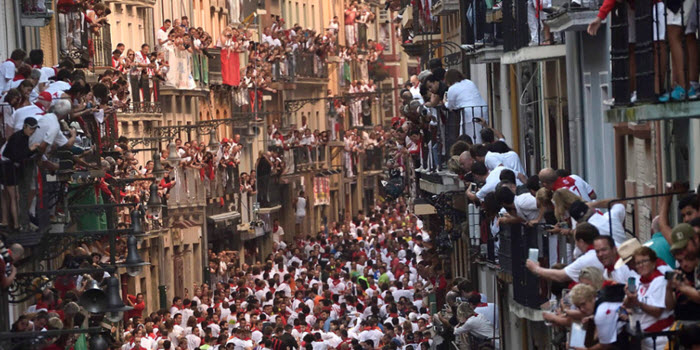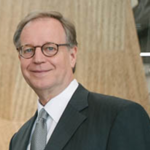
By Tom Kvan — The Mark News—
Urban sustainability is more than about consuming fewer resources. Today, resilience is borne of cultural vibrancy and development.
When I arrive in a new city, I go out for a walk, both to see the city and combat jet lag. In some places, I walk through a calm and ordered neighbourhood, speculating on the lives lived behind the opaque walls. In other places, I see a throbbing community full of activity.
Cities are manifestations of culture. Cultural assumptions about space, privacy, noise or activity inform the policies we write. These policies make our cities.
A major moment in urban development came about toward the end of the 19th century when the pollution in the industrial centres of North America, Britain and Europe caused people to call for more ordered, cleaner and humane cities. From this rallying cry emerged ideas such as the Garden City movement – with green space incorporated into the urban design – and La Ville Radieuse, which proposed towers in a park.
These ideas were distilled into principles, policies and ordinances, laying the foundation for the planning laws of today. These ideas were then disseminated across the world, bringing cultural ideas about appropriate urban experience to distant lands.
I live in a city that is undergoing a cultural transformation. Melbourne is typical of an Australian settlement where cultural norms were introduced from England in the 19th century. The city was organized along economic, political and social lines, with a centre for trade, districts for manufacturing, suburbs organized along religious and social delineations of the day; tanners here, Catholics there. Activity was ordered and distributed and citizens moved from one area to another to engage in the cycle of the day. The city centre was vibrant and active during trading hours and a sterile and inactive place at other times. Manufacturing occurred in the north or west, suburban gardens flourished in the south and east. A building had a purpose – a school, an office, a home – and these never blended. Each is self-sufficient for its purpose and we move between them for our various tasks. Life is ordered and delineated.
Contrast this orderly urban form with the more fluid habitation of an Asian city. One I know well is Hong Kong where the fruit wholesale market takes over a major urban road from two to six every morning, then packs away for the traffic to flow. Likewise, the popular tourist destination of the Mong Kok street market is neatly disassembled at 11 every night; those streets continue to flourish with traffic until the next morning. This multiplicity of use of every space is reflected at the domestic scale in the popular YouTube video of Gary Chang’s transformer apartment. Disparate functions share locations; restaurants and offices coexist on all levels of high rise buildings and the government builds community facilities with markets, food halls, sport halls and quiet study centres on one small footprint, stacked across many levels.
Today, Melbourne’s city centre population is closing in on 100,000 residents while the metropolitan area population is four million and is vibrant throughout the diurnal cycle; just 20 years ago, it was an example of a doughnut city and there were fewer than a third of the today’s population. The design of cities is not the only thing changing; so too does the design of buildings in response to a shifting culture. The sharing economy is emerging, bringing a synchrony between a modern Western thinking of collaborative resource use and the older Asian culture of a more public community life. We are familiar with the idea that we go to the gym when we need the equipment rather than buying it for our own very occasional personal use. Similarly, new apartment buildings do not offer large kitchens and dining rooms in every apartment; instead, they offer well equipped large facilities that can be booked when you want to host a dinner party. Not every apartment has a parking space or two; the building has a few shared cars. At the ground floor there are shops and restaurants, not the protective hedge or brick wall isolating the inhabitants from the rest of the community. In Melbourne, the transformation from a culture of separation to one of communal living is occurring slowly.
In this change, you can see how our concept of culture influences our creation of the city. Cultures of collective responsibility, as in Asia, reduce separation between personal and collective life. Streets are smaller and crowds bigger so we have to jostle to progress. We have shifted from a culture of distain of disorder to an appreciation of serendipity with increasing (licensed) street performances and pop-ups. It is not unusual to be able to enjoy tapas and wine, then attend an opera, and eat Thai food before ending the night clubbing. We no longer hew to an orderly life of cultural distinctions.
We are also becoming aware of the health consequences of our cultural choices. The incidence of obesity is higher in separated suburbs where it is essential to drive and thus sedentary lives are the norm. Mild depression is less common where the individual can observe life going on and feel part of a community.
Cities emerge from cultural assumptions and choices. Urban developments around the world succeed and fail in part because they align with or frustrate local cultural practices. We all want to make cities more sustainable but that is more than just using fewer resources. A resilient city is one that supports cultural vibrancy and development. A successful urban future is a framework for economic and personal cultural.
 Professor Thomas Kvan is the Pro Vice-Chancellor (Campus and Global Development), and Director of Aurin at the University of Melbourne. He was Dean of the Faculty of Architecture, Building and Planning in Melbourne from 2007 – 2015 during which time he led the establishment of the Melbourne School of Design and delivered an award-winning building to host the graduate school. He is the co-author of the book The Making of Hong Kong, which explores the volumetric city as a sustainable urban form. Tom has practiced architecture in Africa, Europe, Hong Kong and the USA in practices small to large, was director of software development in an IT start-up in California and a management consultant to architects and engineers.
Professor Thomas Kvan is the Pro Vice-Chancellor (Campus and Global Development), and Director of Aurin at the University of Melbourne. He was Dean of the Faculty of Architecture, Building and Planning in Melbourne from 2007 – 2015 during which time he led the establishment of the Melbourne School of Design and delivered an award-winning building to host the graduate school. He is the co-author of the book The Making of Hong Kong, which explores the volumetric city as a sustainable urban form. Tom has practiced architecture in Africa, Europe, Hong Kong and the USA in practices small to large, was director of software development in an IT start-up in California and a management consultant to architects and engineers.






Yes, even from a smaller community in Missouri, USA, I can see the blending of necessary commerce and business with social interaction of the citizens. It is now a custom that during warm weather days, there is a downtown Thursday Night Live when people come out to visit, perhaps imbibe and have a good time. I also have noticed that public schools here are involved as part of the educational process by entering into the community activity and business as interns, learners and helpers. The concept of “going to school” no longer has the aspect of exclusiveness that it once had. Thanks for a provocative article on what is coming!